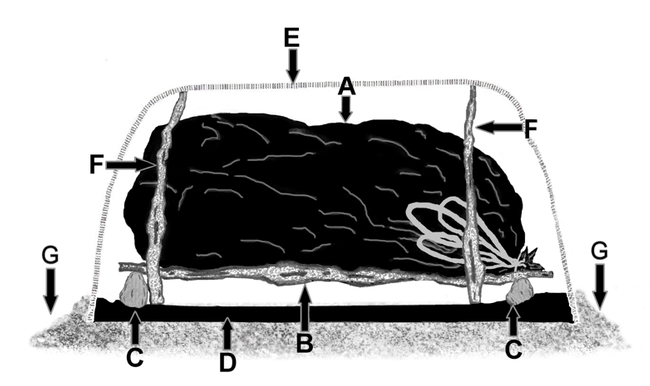In the backyard or in the wild, roguing (selectively pulling or cutting weed plants) and herbicide spot treatments can help prevent small patches of invasive weeds from becoming large infestations. However, herbicide applications may be of little value where senescent plants have already set seeds, because the dead “skeleton” plants may bear dormant but living seeds, which can initiate new infestations.
In the past, such plants may have been removed by stacking and burning them. However, under present conditions, burn permits are hard to come by. Landfill disposal is another option, but transporting seed-bearing plants may spread the seeds, making the problem worse instead of better. Deep burial of plant material on-site is another option, if feasible.
A simple, solar tent process may be used to destroy limited quantities of rogued plant materials on-site. The tents are inexpensive, disposable, don't involve applications of herbicides, and have been successfully tested in several areas of California.
The process involves three steps. First, collect the plant material during warm months of the year in black trash bags. Second, place the bags, containing a couple quarts or more of water to hydrate the seeds (this is essential!) on a makeshift platform to provide airspace between the bags and the ground. Finally, cover with a tent made from a sheet of clear plastic film, anchored firmly to the ground (Figure 1).
Except in cold areas or where it is persistently cloudy or foggy, the diurnal accumulated heat within the tents (up to 158 oF, or higher) should inactivate propagative materials within a few days. Seeds encased in protective pods or other structures may require additional heating time. They can then be disposed of without worries of further spread.
For more information, visit the UC solarization Web site at http://ucanr.org/sites/Solarization/ or the California Invasive Plant Council's Web site at http://www.cal-ipc.org.
Diagram of suggested solar tent construction: (a) closed, black plastic trash bag, e.g., 40 gal volume, containing targeted plant material and one pint to one quart of water for free moisture presence; (b) interior framework of woody plant shoots, sitting on (c) rocks, to elevate trash bag above soil surface and allow heat to surround target; (d) sheet of black plastic film on soil surface to assist with heat accumulation and preclude escape of propagative material onto the soil; (e) clear plastic sheet, supported by (f) hoops of woody plant shoots to form a tent over the treatment bag; (g) exterior rocks, logs, etc., sealing edges of tent canopy to minimize heat loss and preclude escape of propagative material.
This article was originally published in the November 2012 issue of the UC IPM Green Bulletin. See this and other articles at http://www.ipm.ucdavis.edu/greenbulletin/index.html.
